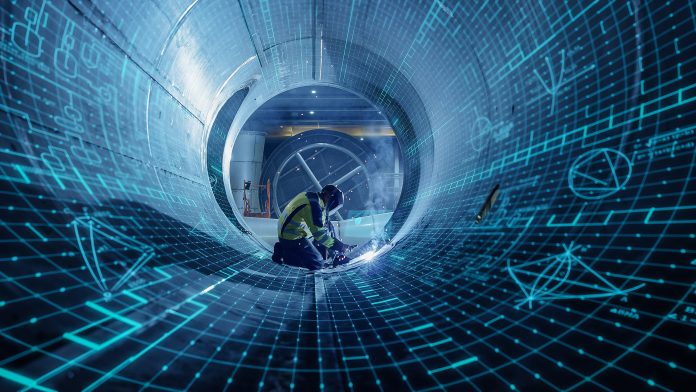Researchers are using Machine Learning to speed up the discovery of proton-conducting oxides, which are important in hydrogen fuel cells.
Researchers at Kyushu University, in collaboration with Osaka University and the Fine Ceramics Centre, have used Machine Learning to identify and synthesise green energy materials for use in solid oxide fuel cells.
These devices can generate energy using clean fuels like hydrogen that do not emit carbon dioxide.
The paper, ‘Discovery of Unconventional Proton-Conducting Inorganic Solids via Defect-Chemistry-Trained, Interpretable Machine Learning,’ reported in Advanced Energy Materials, has the potential to accelerate the search for other materials beyond the energy sector.
Climate change requires clean energy generation
To prevent more greenhouse gas emissions from being released into the atmosphere, scientists have been developing new ways to generate clean energy. Green hydrogen, a universal, light, and highly reactive fuel, is a viable alternative.
However, Professor Yoshihiro Yamazaki, of Kyushu University’s Department of Materials Science and Technology, explained: “[…] as well as optimising how hydrogen is made, stored and transported, we also need to boost the power-generating efficiency of hydrogen fuel cells.”
Research into electrolyte materials
Solid oxide fuel cells need to be able to efficiently conduct hydrogen ions through an electrolyte to generate an electric current.
Current research into new electrolyte materials focuses on oxides with a crystal arrangement of atoms, known as perovskite structure.
The first proton-conducting oxide discovered was in a perovskite structure and high-performing perovskites are identified all the time by scientists.
“But we want to expand the discovery of solid electrolytes to non-perovskite oxides, which also have the capability of conducting protons very efficiently,” argued Professor Yamazaki.
Challenges with traditional material detection methods
Discovering proton-conducting materials with alternative crystal structures through traditional methods has many limitations. For an electrolyte to conduct protons, small traces of dopant must be added to the base material.
However, there are many promising base and dopant candidates that all have different atomic and electronic properties. Therefore, finding the optimal combination that enhances proton conductivity quickly becomes difficult and time-consuming.
Machine Learning used to analyse data
The researchers calculated the properties of different oxides and dopants and then used Machine Learning to analyse the data. The technology was used to identify the factors that impact the proton conductivity of a material and predict potential combinations.
The two promising materials identified by Machine Learning were then synthesised and assessed on how well they conducted protons. In just a single experiment, both materials demonstrated proton conductivity.
The future potential of the materials
One of the materials is the first-known proton conductor with a sillenite crystal structure. The other has a high-speed proton conduction path that is distinct from the conduction paths seen in perovskites.
The performance of these oxides as electrolytes is currently low. However, with further exploration, the team believes their conductivity can be improved.
“Our framework has the potential to greatly expand the search space for proton-conducting oxides, and therefore significantly accelerate advancements in solid oxide fuel cells. It’s a promising step forward to realising a hydrogen society,” concluded Professor Yamazaki.
“With minor modifications, this framework could also be adapted to other fields of materials science, and potentially accelerate the development of many innovative materials.”









